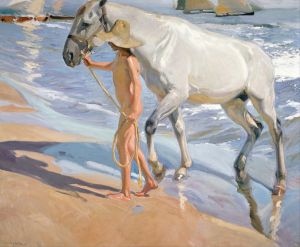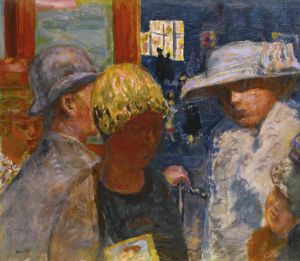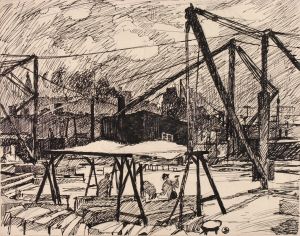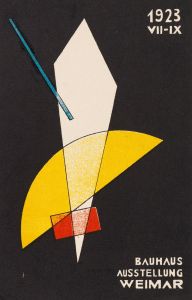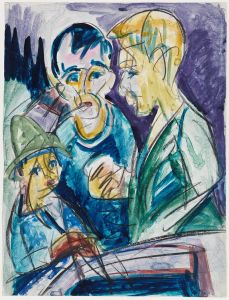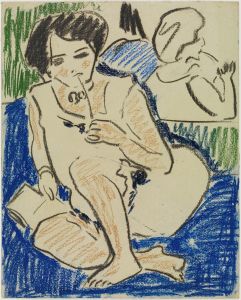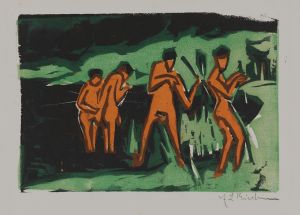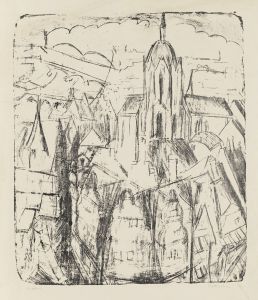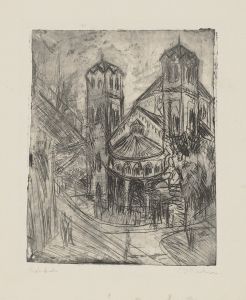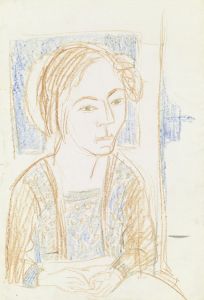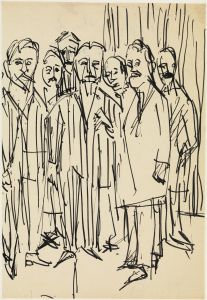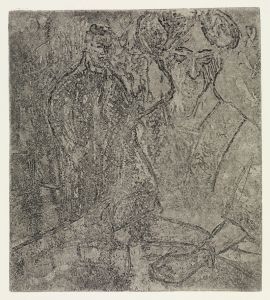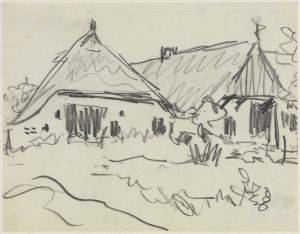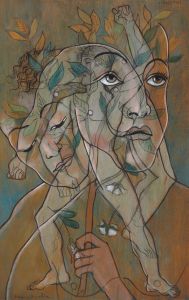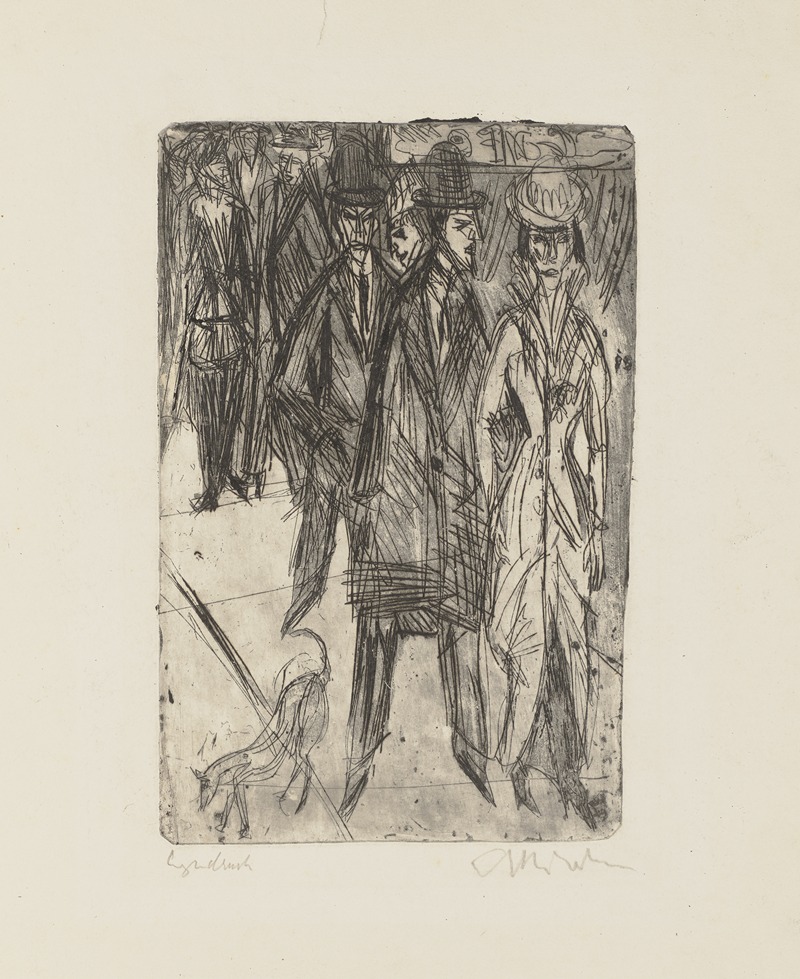
Ansprachen auf der Straße II
A hand-painted replica of Ernst Ludwig Kirchner’s masterpiece Ansprachen auf der Straße II, meticulously crafted by professional artists to capture the true essence of the original. Each piece is created with museum-quality canvas and rare mineral pigments, carefully painted by experienced artists with delicate brushstrokes and rich, layered colors to perfectly recreate the texture of the original artwork. Unlike machine-printed reproductions, this hand-painted version brings the painting to life, infused with the artist’s emotions and skill in every stroke. Whether for personal collection or home decoration, it instantly elevates the artistic atmosphere of any space.
Ernst Ludwig Kirchner was a prominent German expressionist painter and one of the founding members of the artist group Die Brücke (The Bridge), which played a crucial role in the development of modern art in the early 20th century. Kirchner's work is characterized by its bold colors, dynamic compositions, and emotional intensity. One of his notable works is "Ansprachen auf der Straße II" (Street Scene II), which is part of a series of street scenes that Kirchner painted during his time in Berlin.
"Ansprachen auf der Straße II" was created in 1914, a period when Kirchner was deeply engaged with the urban environment of Berlin. This painting, like others in the series, captures the bustling energy and complexity of city life. Kirchner was fascinated by the rapid pace of modern life and the anonymity of the urban crowd, themes that are vividly expressed in this work.
The painting depicts a busy street scene with elegantly dressed figures, likely prostitutes, who were a common subject in Kirchner's Berlin street scenes. The figures are elongated and angular, a stylistic choice that enhances the sense of movement and tension within the composition. Kirchner's use of vibrant, non-naturalistic colors and bold, expressive brushstrokes contributes to the emotional impact of the scene, conveying a sense of alienation and excitement that was part of the modern urban experience.
Kirchner's street scenes are often interpreted as a reflection of his ambivalent feelings towards the city. On one hand, they capture the allure and dynamism of urban life; on the other, they reveal a sense of dislocation and anxiety. This duality is evident in "Ansprachen auf der Straße II," where the figures seem both connected and isolated, part of the crowd yet distinctly individual.
The painting is also notable for its composition. Kirchner employs a tilted perspective and a compressed space, which creates a sense of immediacy and engagement for the viewer. The figures appear to be almost pushed towards the foreground, enhancing the feeling of being part of the bustling street scene.
Kirchner's work, including "Ansprachen auf der Straße II," was influenced by various artistic movements and styles. He drew inspiration from Post-Impressionism, Fauvism, and African and Oceanic art, which is evident in his use of color and form. His work also reflects the broader expressionist movement's interest in conveying subjective emotions and experiences rather than depicting objective reality.
"Ansprachen auf der Straße II" is housed in the collection of the Brücke Museum in Berlin, which holds a significant number of works by Kirchner and other members of Die Brücke. The museum is dedicated to preserving and showcasing the art of this influential group, providing insight into the development of expressionism and its impact on modern art.
Through "Ansprachen auf der Straße II," Kirchner offers a compelling glimpse into the complexities of early 20th-century urban life, capturing both its vibrancy and its underlying tensions. The painting remains an important example of Kirchner's contribution to expressionism and his ability to convey the emotional essence of the modern world.





